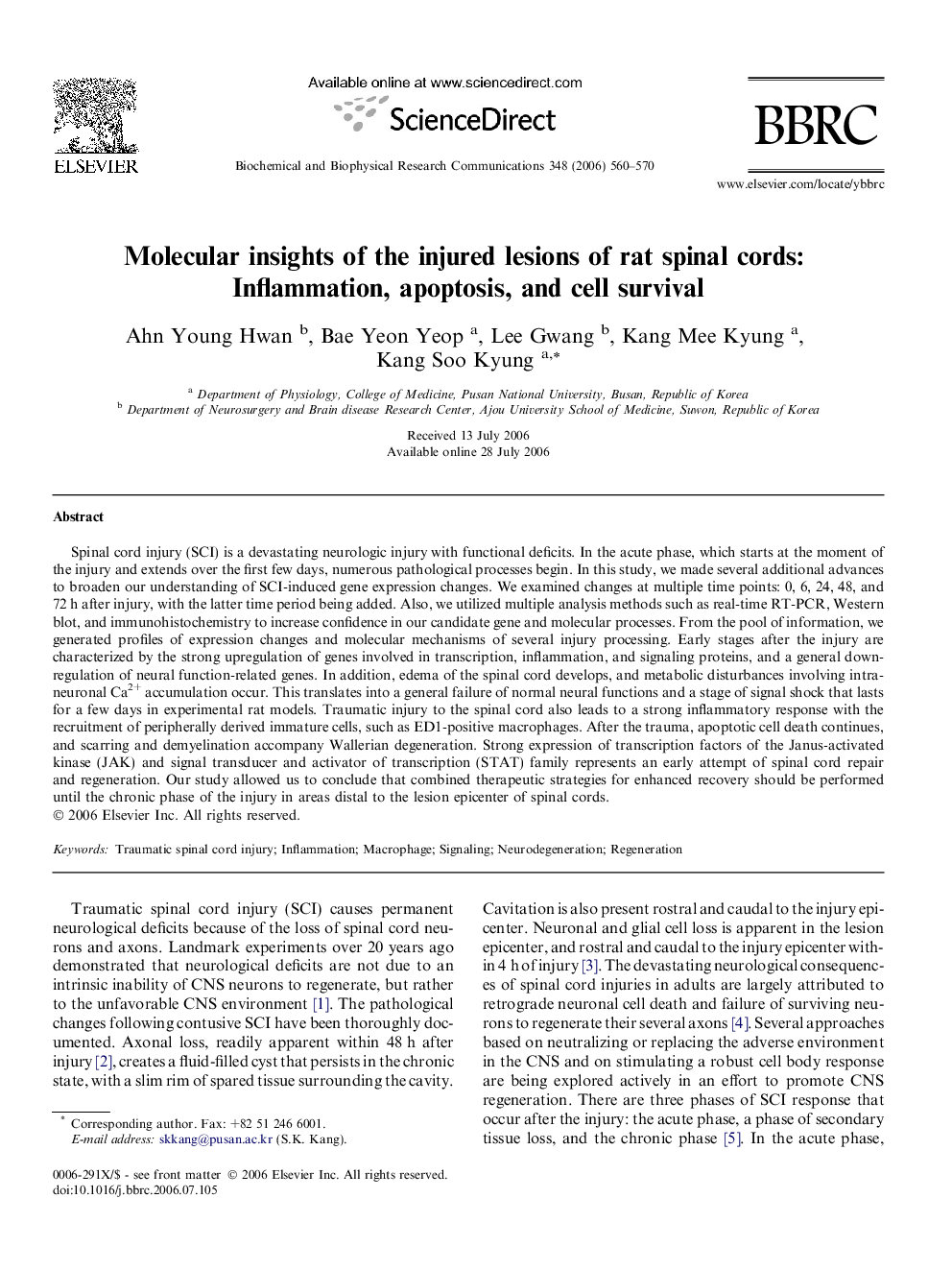| Article ID | Journal | Published Year | Pages | File Type |
|---|---|---|---|---|
| 1939641 | Biochemical and Biophysical Research Communications | 2006 | 11 Pages |
Spinal cord injury (SCI) is a devastating neurologic injury with functional deficits. In the acute phase, which starts at the moment of the injury and extends over the first few days, numerous pathological processes begin. In this study, we made several additional advances to broaden our understanding of SCI-induced gene expression changes. We examined changes at multiple time points: 0, 6, 24, 48, and 72 h after injury, with the latter time period being added. Also, we utilized multiple analysis methods such as real-time RT-PCR, Western blot, and immunohistochemistry to increase confidence in our candidate gene and molecular processes. From the pool of information, we generated profiles of expression changes and molecular mechanisms of several injury processing. Early stages after the injury are characterized by the strong upregulation of genes involved in transcription, inflammation, and signaling proteins, and a general downregulation of neural function-related genes. In addition, edema of the spinal cord develops, and metabolic disturbances involving intra-neuronal Ca2+ accumulation occur. This translates into a general failure of normal neural functions and a stage of signal shock that lasts for a few days in experimental rat models. Traumatic injury to the spinal cord also leads to a strong inflammatory response with the recruitment of peripherally derived immature cells, such as ED1-positive macrophages. After the trauma, apoptotic cell death continues, and scarring and demyelination accompany Wallerian degeneration. Strong expression of transcription factors of the Janus-activated kinase (JAK) and signal transducer and activator of transcription (STAT) family represents an early attempt of spinal cord repair and regeneration. Our study allowed us to conclude that combined therapeutic strategies for enhanced recovery should be performed until the chronic phase of the injury in areas distal to the lesion epicenter of spinal cords.
